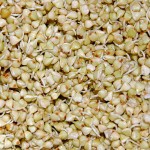 So, if you haven’t been watching Jamie Oliver’s Food Revolution it is a must see. Tune in Friday’s at 9pm on ABC.
So, if you haven’t been watching Jamie Oliver’s Food Revolution it is a must see. Tune in Friday’s at 9pm on ABC.
For those of you who haven’t heard of this program, Jamie Oliver is better know as the “Naked Chef”. He has created a revolution in the school programs at home in England, and has now brought the project to one of the unhealthiest cities in America.
As you can imagine, he gets a lot of resistance and has great struggles trying to get these kids to eat “real food”. The kids are currently on a school lunch program and are being fed pizza and strawberry milk for breakfast and then pizza or chicken nuggets again at lunch. Of course all of these meals are processed containing a whole list of additives not to mention vast amounts of sugar and salt.
Jamie’s mission is to get “real food” back into the school cafeterias which includes meals like pasta, with a meat sauce that is full of vegetables and real chicken or sloppy joes made of unprocessed beef and vegetables and even mac and cheese…but the homemade kind not from a box. He even admits that the meals are sometimes not the “best” choices but they are better than the stuff they are currently eating.
There have been 3-4 clips in this series so far that I have found fascinating and wanted to share them with you
 Is That Chicken?
Is That Chicken?
In one of the first episodes, Jamie does an experiment where he takes a chicken and explains to a group of 6-7 kids where processed chicken nuggets come from. He takes a whole chicken and cuts off the legs and breasts, explains these are the good parts and sets them aside. What is left is the carcass, bones, fat, cartilage..and he takes all of this and cuts it up and places it in a food processor. At this point the kids are screaming and totally grossed out. Jamie explains that these are the ingredients they are eating when they consume chicken nuggets. Then he takes the “mash” and combines this with flour, fillers, and spices to make it taste good, forms them into patties and fries them with a coating.
The kids are watching this whole process, and at the end he asks for a show of hands as to who would eat this.
Even though 3 minutes before they were disgusted by the “mash”, every child put up their hand that they would still eat the chicken nugget. Gross!
The point being, we really have to focus on educating our kids about what is actually in our food as when this food comes in pretty packages they are disconnected from what they are actually eating. This goes for adults too.
What is a Vegetable?
Along this same line, Jamie went into the classroom and was trying to get kids to identify vegetables. While the kids had no problem recognizing things like French fries and pizza – not one single child was able to identify a carrot, potato, eggplant, broccoli etc.
Come Over To The Common Sense Corner
Jamie has his meals going up against the regular school lunch program. On this particular day, he made a pasta that included 7 different kids of vegetables, and that was going up against a burger and fries with the “option” of a side salad.
The supervisor pulled Jamie aside and said that according to standards there wasn’t enough vegetable in his meal. The policy required that you need 1 ½ cups, and even though there were 7 different kinds of vegetables in the pasta there wasn’t 1 ½ cups. When he questioned where the vegetables were in the regular school program dish the answer was the French fries and the option the kids had for the side salad (even though not one child was in the salad line).
This is where we have to use our common sense, and agree that sometimes policy just doesn’t make sense. I bring this up as this happens a lot! We know in our heart of hearts what we should and shouldn’t be eating but we tend to rationalize. My favourite example of this is the whole grain fruit loops…we know this really isn’t great for us, yet we rationalize that at least it is whole grain, or reduced in sugar.
When presented with situations like this…no matter what the policy or label may claim we challenge you to put on your common sense hat!
Is That Milk?
The last one was probably the most mind blowing for me. The last episode had Jamie trying to feed the children plain milk instead of giving them the option to choose the strawberry or chocolate version. Typically these flavoured milks have more sugar than a can of pop…and we know all of the problems that over 10tsp of sugar in one drink can have on a body, let alone a little body! The rationalization for the flavoured milk still being offered was that it is better for a child to drink the sugar to make sure they get their calcium.
My jaw dropped to the floor!
We now know that sugar is one of the major driving forces of things like cardiovascular disease, inflammation, diabetes and now new research is pointing at Alzheimer’s as being the type 3 diabetes. In addition, we know that calcium is leached in an acidic environment…and one of the number one acidic foods is sugar.
Again…here is where we need to advocate for and educate our children.
One of the teachers in this episode encouraged the children to choose the regular plain milk and explained why, and everyone in that class made the right choice in the cafeteria line. It is up to us become educated ourselves, and then educate our children and given the choice they usually do make the right decision!
Your Own Food Revolution
To embark on your own Food Revolution…come to our Transformation Weekend on June 5/6, 2010.
2FOR1 special is on until May 7th!
For More Details click here now: http://www.lose-weight-waterloo.com/
Until Next Time…tune into Jamie’s Food Revolution.
Stay Vibrant
Robin and Kristijana

 Benefits of Buckwheat
Benefits of Buckwheat